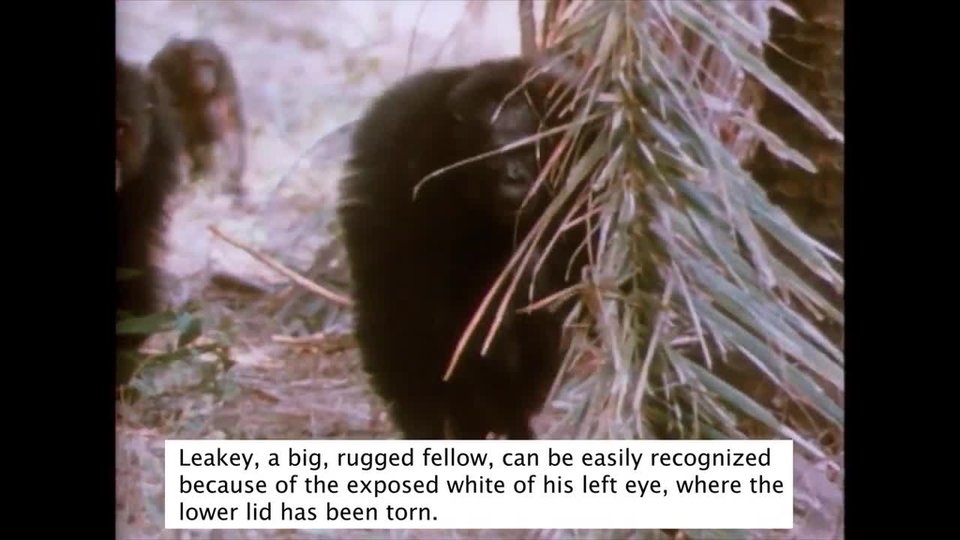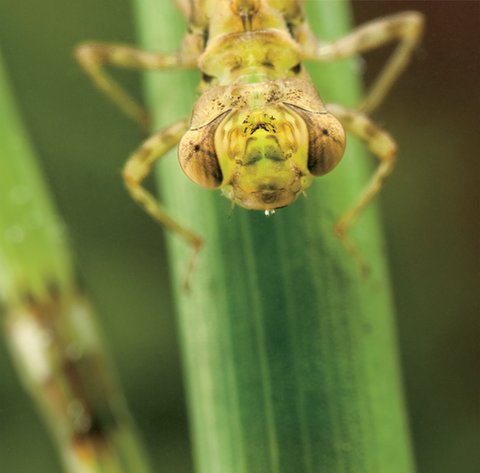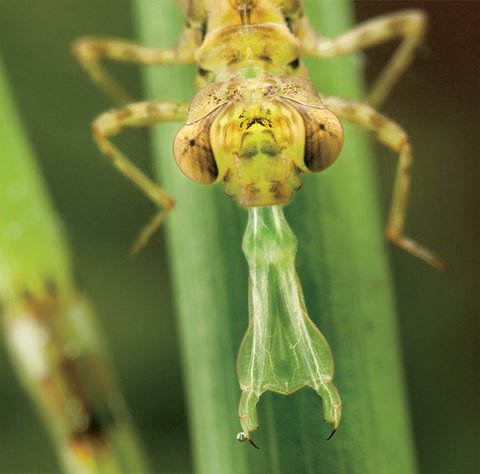CatchingPrey
Asanymph,thesouthernhawkerhasaspecialwayofcatchingprey.Itslowerliphasahingeatitsbaseandanotherabouthalfwayalongitslength.Thisarrangementallowsthenymphtofoldthelipbeneathitsheadwhennothunting.Whenitseesprey,thelipshootsforward,stabbingthepreywithsharp spines.
Thelipcanmoveinlessthan
25milliseconds.It’ssofast,thenymphcanstrikethepreyseveraltimesbeforeitregisterswhatishappening.Oncethepreyisimpaled,thenymphpullsitslowerlipbacktowarditsjaws.Thejawsarestrongandtoughandlinedwithteeth.Theycutthepreyinto pieces.
Asthenympheats,itgrows.Andasitgrows,itmustmolt.Anymphmaymoltasmanyaseighttimes,growingslightlylargereachtime.Theperiodofgrowthbetweeneachmoltiscalledaninstar.Lifeasanymphislong.Thesouthernhawkeronlyspendsafewweeksasanegg,butitwillspendseveralyearsasa nymph.
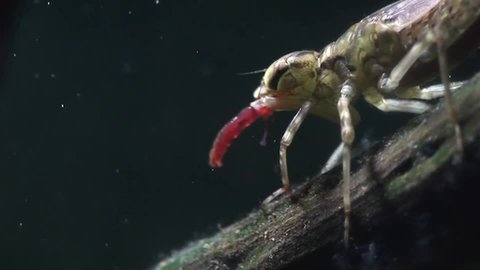
Anymphshootsoutitslowerliptocatch prey.
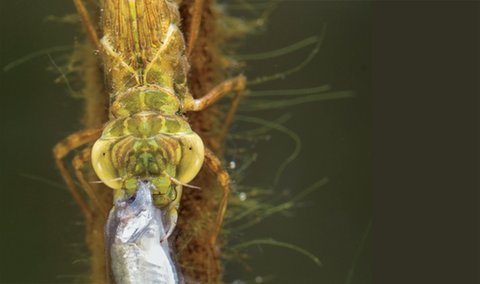
Oncecaught,
thepreyisquicklydevouredbythe nymph.

fish
AFinalChange
Duringthefinalstagesofmetamorphosis,thesouthernhawker’slowerlipcontracts.Itcannolongerhuntandeat.Itneedstomoltonelasttime.Toprotectitselffrompredators,thesouthernhawkerwaitsuntilnightbeforeleavingthewater.Itclimbsupthestemofawaterplant.Whathappensnextalmostdefies description.
Thesouthernhawkerpumpsfluidsintoitsbody.Itstartstoswell.Theexoskeletonsplitsalonglinesofweaknessontheheadandthorax.Itthrustsitsbodythroughthisnewlyformedgap,anditsheadand
legs follow.
Itgingerlystepsoutofitsoldskinandrests.Thenitslowlypumpsfluidsintothehollowveinsofitsnewwingsto
expand them.
FromLarvatoAdult
Takeacloserlookatthejourneyofa dragonfly:
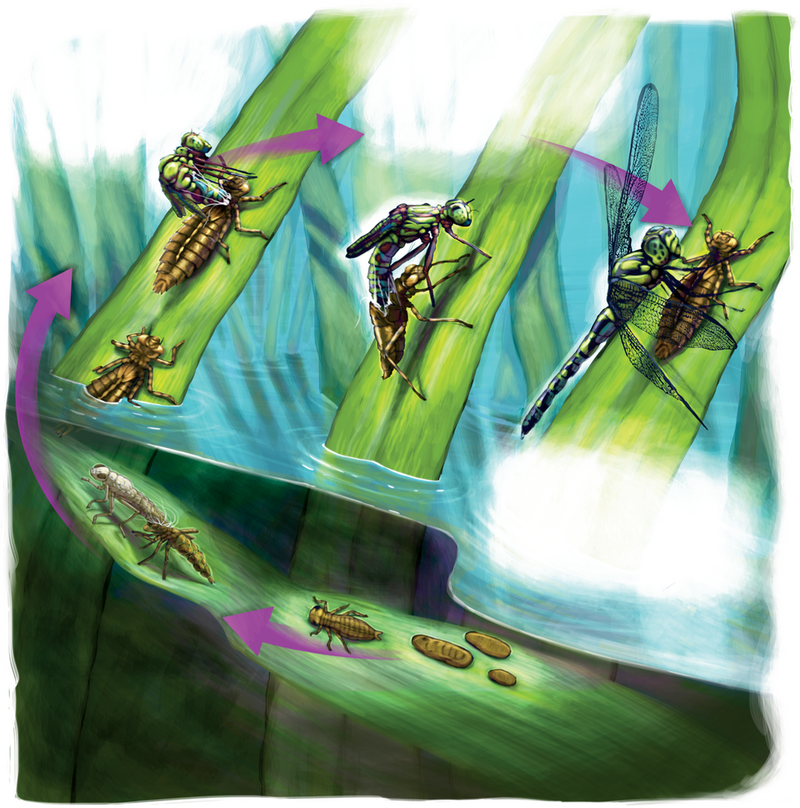
Emerging Nymph
Thelarvaleavesitseggandentersthewaterasa nymph.
Instar Stages
Asthenymphgrows,itmoltsandformsanewexoskeleton.Itwillmolt
several times.
Final Molt
Thenymphleavesthewaterasitsexoskeletonsplitsonelast time.
Emerging Dragonfly
Thedragonflyclimbsoutofitsexoskeletonandwaitsforitsnewskinto harden.
Readyfor Flight
Theadultdragonflyunfurlsitswingsinthesunlightbeforetakingitsfirst flight.
